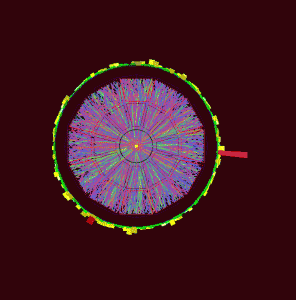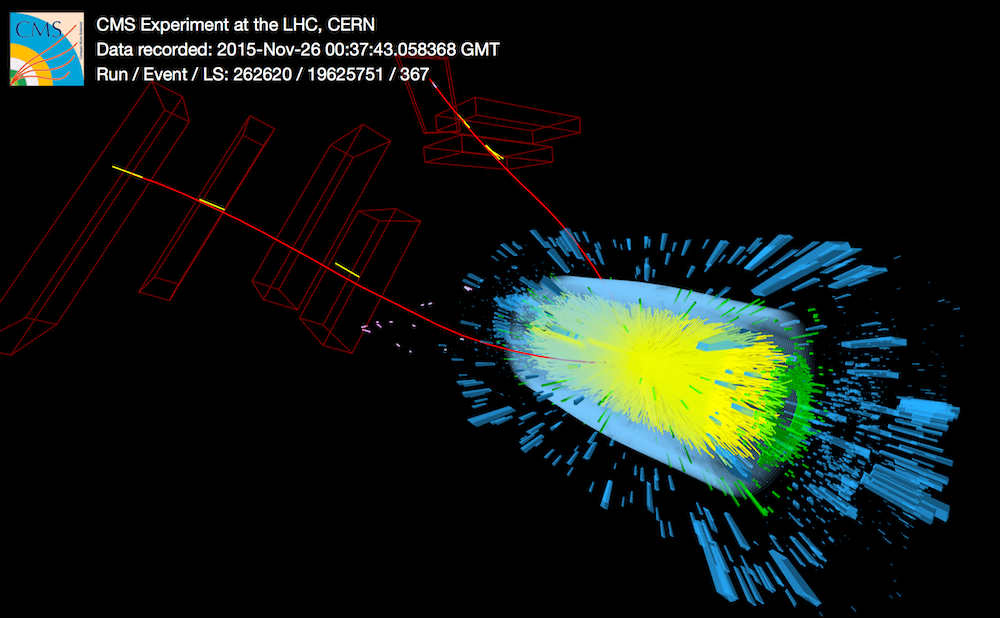o

The images show the outcome of collision events among two heavy ions accelerated to relativistic energies. We collide the ions to study the strong nuclear force, which gets that name because it is the strongest force in nature: it is stronger than gravity and stronger than electricity. Without it, protons, neutrons and the nuclei that make up all the matter we are familiar would not exist. We have realized that these familiar nuclei are only the low-temperature manifestation of the particles that make up the strong force, in a similar way in which ice is the low temperature manifestation of liquid water whose molecules interact via the electric force. By heating up ice we can melt it and make water. Likewise, we can collide nuclei at the highest possible energies in order to make matter that is hotter than the sun, for a tiny instant. We then create a new state of matter in which the protons and neutrons have melted into their more elementary constituents, which are particles called quarks and gluons. This new state is called the Quark-Gluon Plasma and has very surprising properties.

Many particles are produced in the collision. In the picture above, the red tracks are from a muon and it’s antiparticle seen in the Compact Muon Solenoid at the LHC, CERN. These muon-antimuon pairs can be produced from the decay of particles made of a heavy quark and an antiquark, and can tell us about the properties of the new state of matter formed in heavy-ion events. We call this state the Quark-Gluon Plasma, because the protons and neutrons in the nuclei melt into a soup of their constituent quarks and gluons. The di-muon events in these collisions can tell us how hot is this “quark soup”.
Support
Supported by grants from the National Science Foundation: Grant No. 1812398. , Grant No. 1322527 (LHC Film “Secrets of the Universe“), Grant No. 1263201 (REU Program). Past Grants:Grant No. 1404281, Grant No.1068833, CAREER Grant No. 0645773, Grant No. 1038404 (Hot Quarks conference)
